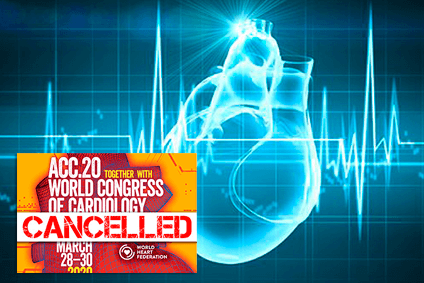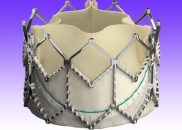The initial results of this study presented “virtually” at the American College of Cardiology (ACC) 2020 Scientific Session suggest that patients with severe bicuspid aortic stenosis can be treated with self-expandable valve Evolut. This is a small study presenting its 30-day outcomes. There is still a long way to go. The rate of all-cause mortality…
Virtual ACC 2020 | Conscious Sedation in TAVR
According to the TVT Registry, patients who undergo transcatheter aortic valve replacement (TAVR) with conscious sedation have better outcomes, including lower mortality rates. A minimalist strategy always (sooner or later) proves to be superior across our whole range of procedures, from a simple diagnostic study with local anesthesia and a 4-Fr transradial access, to a…
TAVR in Extremely Large Annuli: Different Patients Might Need Different Prostheses
Nearly all prostheses for transcatheter aortic valve replacement (TAVR) commercially available at present are adequate for most patients. However, there are certain subgroups, relatively small, that could benefit from a particular one. Yesterday we went over the best suited for small annuli, which turned out to be the self-expandable in general and the Evolut PRO…
TAVR in Small Annuli: Is There a Better Valve?
Transcatheter aortic valve replacement with the self-expandable valves has shown optimal clinical and electrocardiographic results in patients with small annuli. These supra-annular prosthetic valves seem somewhat better than the intra-annular balloon expandable. TAVR in general has better functional results in terms of patient/prosthesis mismatch. This seems especially true for patients with a small annulus. The…
Europe Advances the Transcaval Approach for TAVR
The transfemoral access is clearly the preferred approach to transcatheter aortic valve replacement (TAVR), followed by the trans-axillary or trans-subclavian. Despite the alternatives, some patients are still ineligible. This study recently published in EuroIntervention reports initial experiences in Europe with the transfemoral transcaval approach. It included 50 patients from 5 centers assessed according to the…
Treating Both Atrial Valves Improves Survival
Courtesy of Dr. Carlos Fava. There a few treatment options for tricuspid valve disease. It is practically limited to diuretics and surgery, is associated to high mortality and, generally, mitral regurgitation. Developing the “edge-to-edge” strategy with MitraClip has been shown beneficial and, at present, there are studies that claim this technique could be greatly beneficial…
Percutaneous Annuloplasty in Functional Mitral Regurgitation vs. Sham Procedure
In cases where it is difficult to demonstrate the improvement of a drug or a device in hard endpoints such as mortality, we should look for softer and easier to prove endpoints. The problem is that these soft endpoints are often subjective (such as sensation of shortness of breath or angina pectoris) and they could…
Unilateral Vascular Access in TAVR: Our Main Procedure, Increasingly Minimalist
There has been a significant decline in vascular complications in the last few years due to improvements in device profiles and operator experience on transcatheter aortic valve replacement (TAVR). Unilateral vascular access for transfemoral TAVR is as safe as bilateral access and it could be more comfortable for patients according to this study recently published…
Pre-TAVR Revascularization: Angiographic or Physiological?
In patients undergoing transcatheter aortic valve replacement (TAVR), fractional flow reserve (FFR) guided revascularization is associated with favorable results compared against the traditional angiography guided revascularization. Given the complete lack of randomized studies, this observational study is the best we have to decide how to guide revascularization in patients with symptomatic severe aortic stenosis undergoing…
Lower Mismatch Rate with the New Self-Expandable Valves
Prosthesis mismatch (PPM) was introduced by Rahimtoola in 1978 and happens when the effective orifice area of a heart valve prosthesis is too small in relation to patient body size. Surgical valves have been well documented, but there is little information on percutaneous valves. The study looked at 757 patients undergoing TAVR with pre and post procedural eco-Doppler…
AHA 2019 | RECOVERY: Early Surgery in Asymptomatic Severe Aortic Stenosis
This small randomized study heated the debate about when to intervene aortic stenosis (AS). Putting off surgical valve replacement (SAVR) in patients with asymptomatic AS and waiting for symptom onset with conservative care increased periprocedural risk and all cause cardiovascular death. This study presented by Dr Duk-Hyun Kang during AHA 2019 scientific sessions (simultaneously published…










